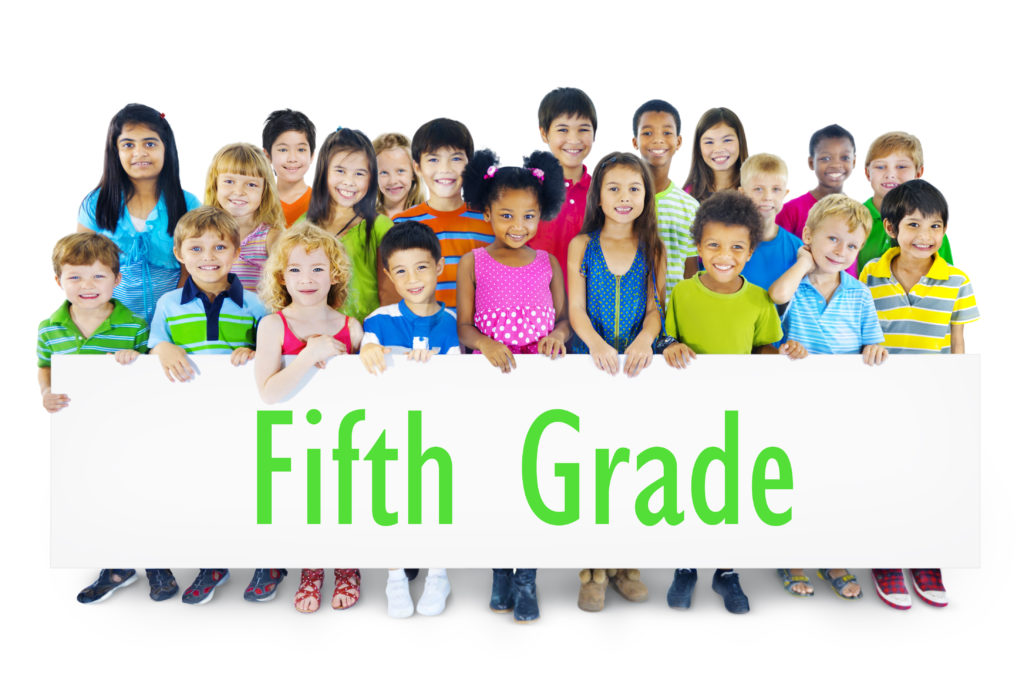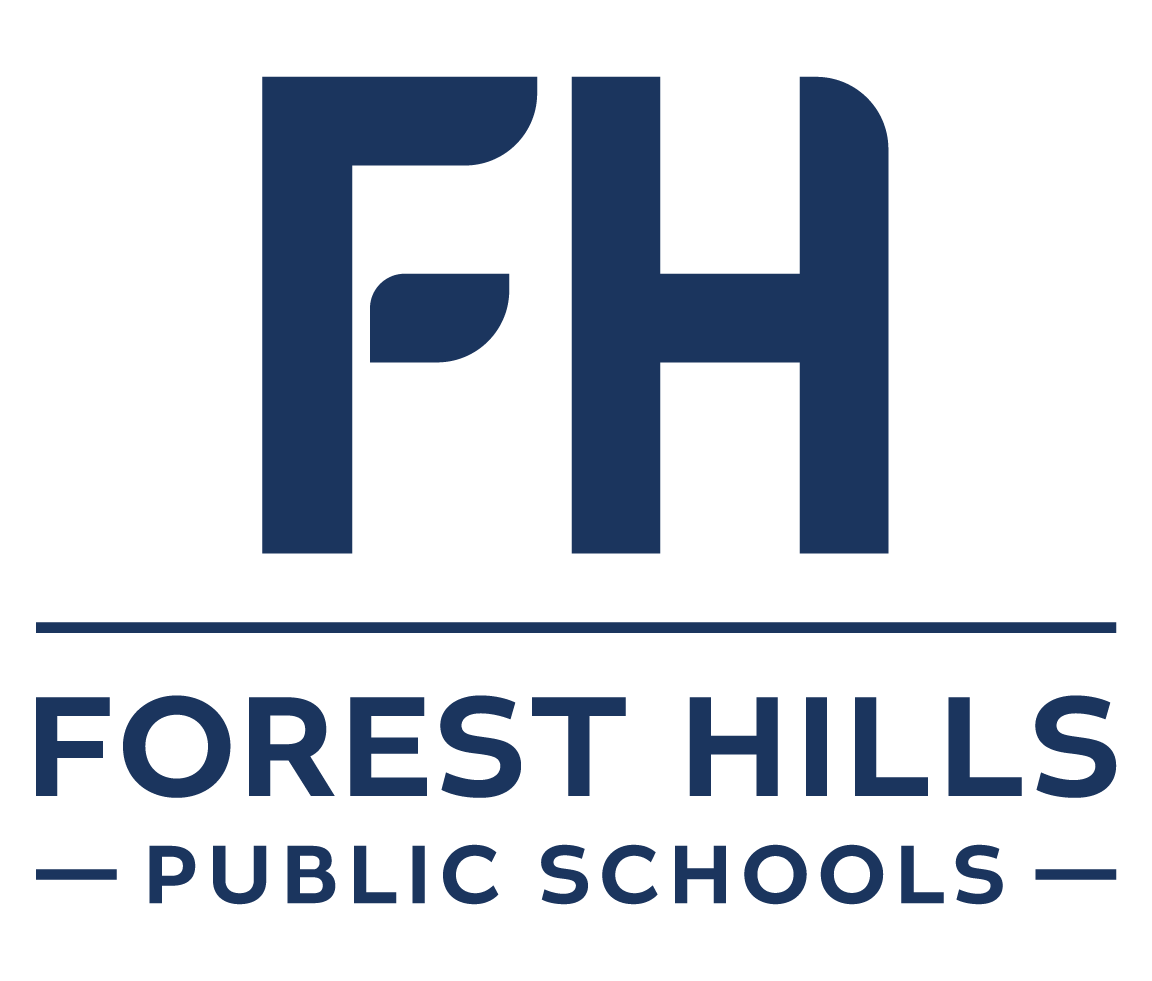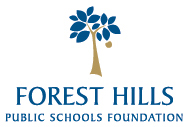
English Language Arts
Fifth graders increase their independence and become active, thoughtful, engaged readers and writers. They read more challenging texts and understand a range of genres which demand higher-order thinking. Fifth graders are challenged by many longer descriptive words and by content-specific and technical words that require using background knowledge, and tools such as glossaries. Fifth graders develop their ability to identify big ideas in texts and share inferences of their own to build meaning. Students continue to read, write, and discuss fiction and nonfiction texts daily to learn how different sources are crafted to help readers construct meaning about the world. Academic conversations help students apply foundational listening and speaking skills to learn how to understand, speak, and use words to communicate and actively engage within and beyond the classroom. Additionally, students’ writing stamina grows, and they become more sophisticated with their words when writing about what they are learning and their personal experiences. Fifth graders deepen their understanding of the qualities of good writing by exploring a variety of structures using the writing process. The ultimate goal of a balanced language arts curriculum is to build skills, independence, and passion to become lifelong readers, writers, and speakers.
Throughout the year teachers use a variety of formal and informal assessments to examine students’ strengths and areas of focus to inform instruction to ensure all students progress toward grade-level expectations.
Fifth graders continue to learn and apply social and emotional skills in a variety of ways to become self-aware, to nurture positive and respectful relationships with their teachers and peers, and to self-advocate. Creating a safe and inclusive community is foundational to a great year of learning for all.
Highlights of Fifth-Grade Language Arts
- Summarizing the key details of stories and nonfiction materials, including their themes or main ideas.
- Identifying and judging evidence that supports particular ideas in an author’s argument to change a reader’s point of view.
- Integrating information from several print and digital sources to answer questions and solve problems.
- Writing opinions that offer reasoned arguments and provide facts and examples that are logically grouped to support the writer’s point of view.
- Participating in class conversations to understand others, build vocabulary, and communicate thoughts and needs.
- Reporting on a topic or presenting an opinion with his or her own words, a logical sequence of ideas, sufficient facts and details, and formal English when appropriate.
- Building knowledge of academic words with an emphasis on those that signal a contrast in ideas or logical relationships, such as on the other hand, similarly, and therefore.
Visit Michigan K-12 English Language Arts Standards for a complete view of the fifth-grade standards your child will be working toward in English language arts.
 Ideas for Supporting Your Reader/Writer
Ideas for Supporting Your Reader/Writer
- Establish a family reading time.
- As a family, discuss the similarities and differences between the books you are reading.
- Go online to your local library website to view a calendar of fun events (often at no cost for participation).
- Apply for a library card so all family members can check out books on subjects that interest them.
- Show interest in your child’s reading by asking your child about the books he/she is reading.
- Start a family vocabulary box or jar. Have everyone write down new words they discover, add them to the box, and use the words in conversation.
- Talk about the events of the school day.
- Encourage your child to always carry a book to read in spare moments.
- Encourage your child to write a thank you note or letter to a family member or friend.
- Encourage your child to journal to capture thoughts and daily events in writing or drawings.

Social Studies
America’s Past
Beginning in fifth grade, social studies courses begin to be more discipline centered. Fifth graders build upon their knowledge of geography, civics and government, economics, and historical inquiry to study American history. They begin with the Native American people before the arrival of European explorers and conclude with the adoption of the Bill of Rights in 1791. Through a study of the struggles of early settlers, students develop an appreciation for the roots of democracy. They learn about the major events and key individuals that influenced the ideals and philosophies that are at the heart of the Declaration of Independence, the American Constitution, and the Bill of Rights.
Visit the Michigan Social Studies Academic Standards for a complete view of the grade standards your child will be working toward in social studies. This curriculum is also aligned with the College, Career & Civic Life Framework for Social Studies State Standards.
 Ideas for Supporting Your Social Scientist
Ideas for Supporting Your Social Scientist
- Read books about interesting places, people, and events in history.
- Seek opportunities to volunteer for a local organization.
- Discover Michigan together. Bring history alive by visiting historic homes, sites, local museums, and cemeteries.
- Visit local museum websites to learn about family opportunities and the monthly events in the Grand Rapids metro area.
- Discuss your family stories and history. Encourage your child to ask relatives questions about their lives. Put the information together in an album or brainstorm different ways to tell family tales, such as poems or short stories.

Science
Fifth graders are curious about the world and how it works. Throughout the year, students engage in science learning experiences to connect their thinking, make observations, formulate new ideas, and make sense of the natural world and how it works. Fifth graders learn to apply Science and Engineering Practices to think like scientists.
Highlights of Fifth-Grade Science
Fifth-grade students describe that matter is made of particles too small to be seen through the development of a model. They develop an understanding of the idea that regardless of the type of change that matter undergoes, the total weight of matter is conserved. Fifth graders determine whether the mixing of two or more substances results in new substances. Through the development of a model using an example, they describe ways the geosphere, biosphere, hydrosphere, and/or atmosphere interact. Students describe and graph data to provide evidence about the distribution of water on Earth. During fifth grade, they are expected to develop an understanding of patterns of daily changes in length and direction of shadows, day and night, and the seasonal appearance of some stars in the night sky. Students will learn about specialized systems of organisms that perform specific needs of the organism.
FHPS focuses on instruction and learning of the Michigan Science Standards. Click on the link to view the fifth-grade standards your child will be working toward in science.
 Ideas for Supporting Your Scientist
Ideas for Supporting Your Scientist
- Talk with your child to listen and learn what they are curious about.
- Science in the kitchen: Follow recipes and observe what happens as ingredients are added.
- Science in the backyard or park: Notice what your senses observe. Discuss the types of birds, animals, and insects that you observe.
- Visit local museum websites to learn about family opportunities and the monthly events in the Grand Rapids metro area.

Mathematics
Fifth graders build off of their previous experiences and deepen their mathematical skills while applying the practices mathematicians use. They…
- Make sense of problems and persevere in solving them.
- Reason abstractly and quantitatively.
- Construct viable arguments and critique the reasoning of others.
- Model with mathematics.
- Use appropriate tools strategically.
- Attend to precision.
- Look for and make use of structure.
- Look for and express regularity in repeated reasoning.
Fifth-grade mathematicians are encouraged to be creative problem solvers and flexible thinkers. They work through challenging problems in small groups and on their own, developing independence and persistence. They develop their fluency skills by playing with numbers which allows them to think flexibly with methods and strategies to solve problems efficiently and accurately.
Highlights of Fifth-Grade Mathematics
Operations and Algebraic Thinking
- Write and interpret numerical expressions.
- Analyze patterns and relationships.
Number and Operations in Base 10
- Understand the place value system.
- Perform operations with multi-digit whole numbers and with decimals to hundredths.
Number and Operations-Fractions
- Use equivalent fractions as a strategy to add and subtract fractions.
- Apply and extend previous understandings of multiplication and division to multiply and divide fractions.
Measurement and Data
- Convert like measurement units within a given measurement system.
- Represent and interpret data.
- Geometric measurement: understand concepts of volume and relate volume to multiplication and to addition.
Geometry
- Graph points on the coordinate plane to solve real-world and mathematical problems.
- Classify two-dimensional figures into categories based on their properties.
Visit the Michigan Mathematics Academic Standards for a complete view of the fifth-grade standards your child will be working toward in math.
 Ideas for Supporting Your Mathematician
Ideas for Supporting Your Mathematician
- Create and solve division number stories with remainders. Discuss what to do with the remainder.
- Look for decimals in the world around you. Ask your child to read them aloud and compare to other decimals.
- Create and solve decimal number stories.
- Double, triple, or halve recipes when cooking or baking. Discuss how amounts change.
- Here are some specific Everyday Math games to play online:
- High-Number Toss
- Hidden Treasure
- Over and Up Squares
- Divisibility Dash
- Top-It (many versions including multiplication, division, decimals, and fractions)
- Decimal Domination
- Doggone Decimal
- Family Letters: Visit this site for an overview of the mathematical learning at school.
- Visit the Standards for Mathematical Practice for Parents.







